Veterans help uncover Napoleonic-era barracks at Weeley
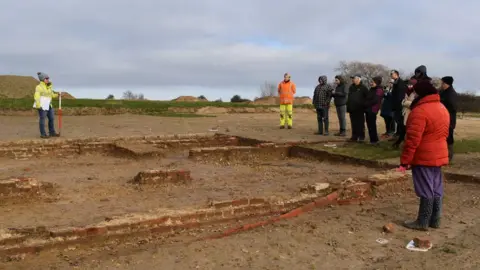 Oxford Archaeology East Ltd
Oxford Archaeology East LtdMilitary veterans have helped reveal the remains of a Napoleonic War-era army barracks during an excavation.
More than 4,000 soldiers were based at Weeley in Essex, between 1803 and 1814, but the site was demolished and no physical evidence of it remained.
Military-related finds and 16 buildings were uncovered during the excavation.
MOD archaeologist Richard Osgood said: "The fact the site linked directly to some of the forebear regiments of our participants was poignant for all."
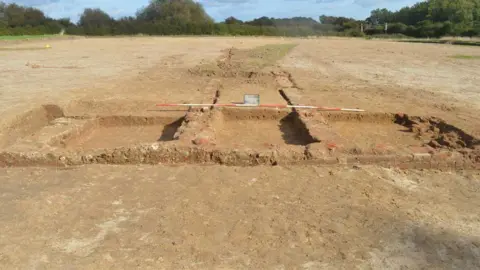 Oxford Archaeology East
Oxford Archaeology East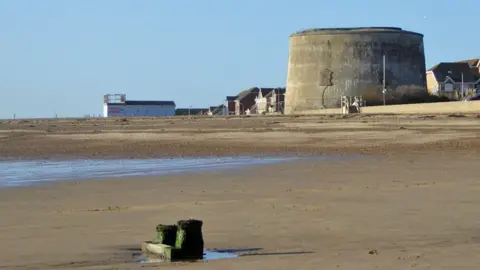 Geograph/Robin Webster
Geograph/Robin WebsterWeeley was a small parish of 250 people at the start of the 19th Century and its population swelled dramatically when the soldiers, their families and 220 cavalry horses arrived.
The barracks was built to garrison the coastal artillery forts called Martello towers, which were built on the Essex coast to provide defence against a French invasion.
Mary Ann Grant, wife of one of the captains, wrote about life at Weeley in its earliest days in her diary while the camp was being set up.
She described tents and unfinished roads and accommodation blocks.
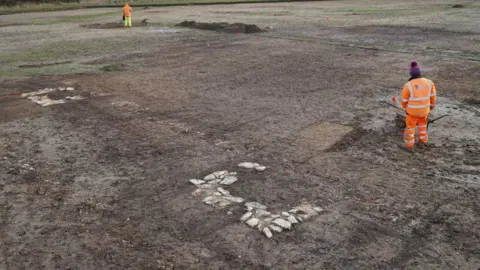 Oxford Archaeology East
Oxford Archaeology East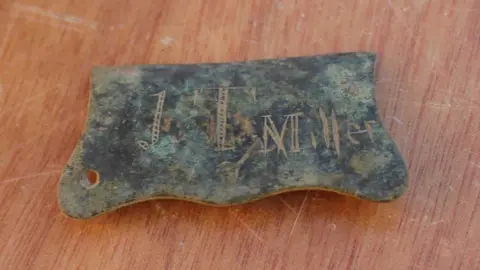 Oxford Archaeology East Ltd
Oxford Archaeology East LtdThe excavation by Oxford Archaeology East revealed roadways and a still-functioning network of French drains, as well as the buildings.
Archaeologists found a "hierarchy of living quarters", with better quality bricks used in some of the buildings, which also had more fireplaces, suggesting they were officers' quarters.
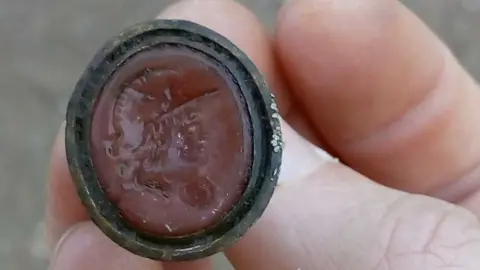 Oxford Archaeology East Ltd
Oxford Archaeology East LtdSenior project manager Louise Moan said: "It's been really exciting unpicking the findings and being able to tie these to historical documentation so we get an understanding of the people stationed here and what it was like living at the barracks."
The team worked with the Ministry of Defence initiative Operation Nightingale to involve Essex-based military veterans who had associations with the regiments stationed at the barracks 200 years ago.
It helps rehabilitate current and former military personnel through archaeological investigations.
The five-month excavation was carried out ahead of a development by Rose Builders.
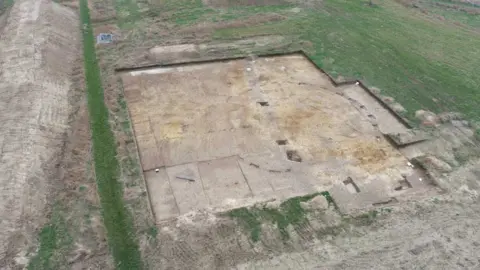 Oxford Archaeology East Ltd
Oxford Archaeology East Ltd
Find BBC News: East of England on Facebook, Instagram and Twitter. If you have a story suggestion email [email protected]
